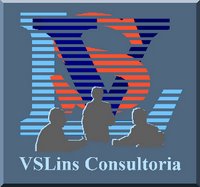Varieties of Tacit Knowledge
The distinction between tacit knowledge and explicit knowledge has sometimes been expressed in terms of knowing-how and knowing-that, respectively (Ryle 1949/1984, pp. 25-61), or in terms of a corresponding distinction between embodied knowledge and theoretical knowledge.
On this account knowing-how or embodied knowledge is characteristic of the expert, who acts, makes judgments, and so forth without explicitly reflecting on the principles or rules involved. The expert works without having a theory of his or her work; he or she just performs skillfully without deliberation or focused attention.
Knowing-that, by contrast, involves consciously accessible knowledge that can be articulated and is characteristic of the person learning a skill through explicit instruction, recitation of rules, attention to his or her movements, etc. While such declarative knowledge may be needed for the acquisition of skills, the argument goes, it no longer becomes necessary for the practice of those skills once the novice becomes an expert in exercising them, and indeed it does seem to be the case that, as Polanyi argued, when we acquire a skill, we acquire a corresponding understanding that defies articulation (Polanyi 1958/1974).
But the distinction between knowing-how and knowing-that breaks down upon examination. As Dretske has pointed out (Dretske 1988, p. 116), knowing-how involves more than just a certain technical or physical "know-how"; it also involves knowing how to obtain desired end-states, knowing what to do in order to obtain them, and knowing when to do it.
Implied in all this is that knowing how to perform action _A_ means knowing that certain things are the case regarding, for example, tools, the situation in which _A_-ing takes place, and so forth. If, as seems likely, this is the case, then knowing-how would seem to be closely bound up with, if not dependent on, some variety of knowing-that. Even if we are able to isolate the know-how that goes into _A_-ing, it isn't clear that the processes, involved -- which narrowly understood may amount to little more than automatized physical sequences or muscular reflexes -- count as cognitive in any interesting way.
Note, though, that in rejecting the distinction between knowing-how and knowing-that we are not thereby denying the existence of tacit knowledge per se; rather, we are denying its exclusive identification with procedural operations that may in the end have little to do with knowledge as such.
What is rejected is not the idea that skillful (or other) activities may rely on content states that are inaccessible to consciousness (or that conscious attention is not necessary for the exercise of a given skill), but rather the notion that a given behavior or performance stands as the proper criterion for possession of the tacit knowledge in question. Certainly there is no reason to suppose that the knowing-that which would seem to come into play even in expert performance cannot be tacit.
That an exhaustive equation of tacit knowledge with pretheoretical, skilled expertise cannot be maintained becomes particularly clear when we consider that one widely accepted paradigm of tacit knowledge is to be found in language competence (e.g., Chomsky 1986, pp. 263-273; 1980, pp. 69-70; 1972, pp. 103-104). In contrast to the variety of tacit knowledge described above, knowledge of language is not understood to constitute a skill, and thus to consist in a capacity to do something -- and consequently to have possession predicated on the appropriate behavioral criteria -- but rather is a properly cognitive capacity, and therefore defined in terms of mental states and structures that are not always or reliably manifested in behaviors or performances (Chomsky 1986, pp. 9-10; 1980, p. 48).
We might point to a third kind of tacit knowledge, which consists in what might be thought of as the presuppositions or stances many of our actions and behaviors commit us to.
Such stances are not occurrent beliefs, although they may be expressed as occurrent beliefs under the appropriate circumstances. Rather, they constitute a kind of cognitive background or disposition to believe that certain things are the case (cf Searle 1995, 1992, 1983; see also entry on The Background).
An example of this kind of tacit knowledge is that objects are rigid, a bit of knowledge few people ever bother to formulate, but which is evidenced in such basic everyday actions as sitting in a chair. Because such knowledge is expressible as a propositional content, it would seem to be a case of tacit knowing-that. (It is tacit knowledge of this sort that may ultimately explain the cognitive dimension at work in those cases held up as examples of embodied knowledge or knowing-how.) These tacit stances or presuppositions are perhaps best described as tacit beliefs or hypotheses that can be falsified under the appropriate conditions.
While the kinds of tacit knowledge underlying skills or expert performances on the one hand, and cognitive competences like knowledge of language on the other, appear to be domain-specific, this third type of tacit knowledge would appear to be more generally applicable. It seems to be the case that the cognitive content associated with tacit beliefs of this sort comes into play across a diverse set of activities and domains. Much, though by no means all, of the heterogeneous set of biological and cultural stances and capacities that Searle refers to as The Background (see entry on The Background) may be thought of as consisting in a generally applicable tacit knowledge of this sort.
Although the three conceptions of tacit knowledge outlined above differ from each other in significant ways, they do have one central feature in common, and that is the postulation of content states that are at once causally efficacious and inaccessible to (or not ordinarily accessed by) consciousness.
Extraído de tacit knowledge


<< Home